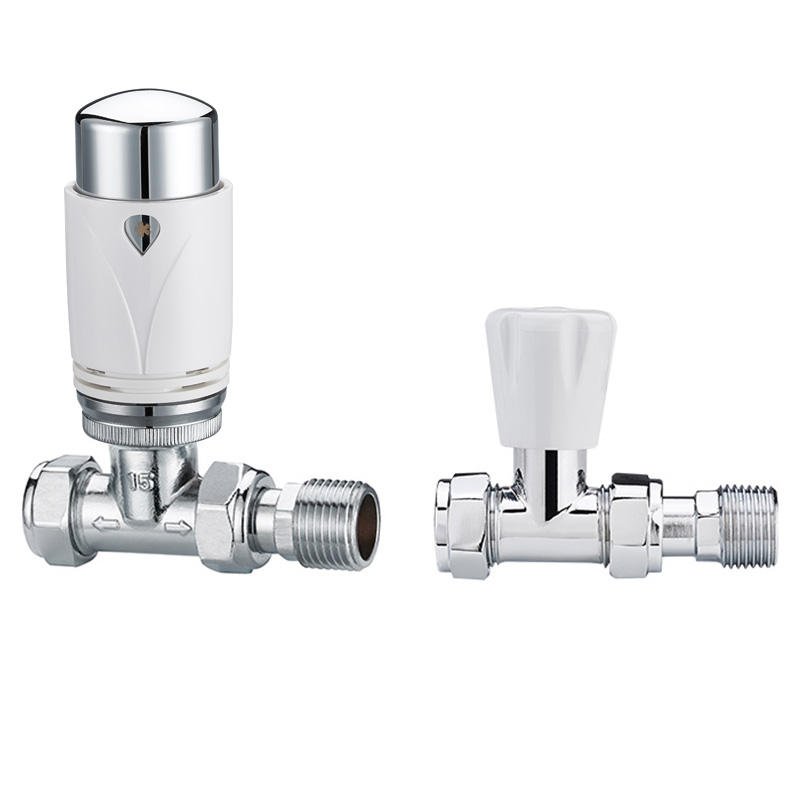You turn on your heating, expecting a cozy room, but your radiator barely warms up. Frustrating, right? This could mean chilly nights, unhappy customers, or even lost sales if you’re supplying building materials. Don’t worry—there’s a fix! This article digs into why your radiator’s acting up and how to solve it, so keep reading.
If your radiator isn’t giving much heat, it’s likely due to air trapped inside, a faulty thermostatic radiator valve not working, or sludge buildup blocking water flow. Bleeding the radiator, checking the valve settings, or flushing the system usually fixes it fast.
Curious about the details? Stick around—we’ll break it down step-by-step so you can get that heat flowing again and keep your customers happy.

Why Are My Radiators Not Heating Up Properly?
Radiators not heating up can drive anyone nuts, especially in winter. One big reason is air stuck inside the system. When air bubbles form, they stop hot water from moving through the pipes. You might hear gurgling noises—that’s a clue! Bleeding the radiator with a key lets the air out, and boom, heat’s back. Another issue could be your thermostatic radiator valve settings. If they’re set too low or the valve’s jammed, the water won’t flow right. IVALVECRAFT’s brass thermostatic radiator valves are built for stable flow and easy fixes—just tweak the head or replace it if needed. Sludge is another culprit. Over time, dirt and rust pile up, clogging things up. A good flush can clear it out. For businesses like Antonio’s in Russia, who need reliable heating parts, quality matters. Cheap valves might fail here, so go for high-quality options.
Why Is My Radiator Full of Water but Cold?
Picture this: your radiator’s full of water, but it’s still ice-cold. What’s going on? Often, it’s the thermostatic radiator valve not working. These valves control how much hot water gets in. If the pin inside gets stuck or the thermostatic radiator valve head only part breaks, no heat comes through. You can test it—take the head off and see if the pin moves. If it’s stuck, a quick tap or a new valve from IVALVECRAFT solves it. Another issue might be a broken pump. If the pump’s not pushing water through, the radiator stays cold even when full. For wholesalers in Poland or the UK, this is a big deal—delays from faulty parts can mess up peak sales. Our pressure reducing valves and manifolds keep things steady, so Antonio’s clients in Russia don’t freeze waiting for a fix.
Why Is My Radiator Not as Hot as Others?
Ever notice one radiator’s toasty while another’s barely warm? It’s annoying, especially if you’re a purchasing officer trying to keep a project on track. This usually happens because of uneven water flow. If your system’s not balanced, some radiators get more hot water than others. Adjusting the thermostatic radiator valve settings can even things out—turn down the hot ones and up the cold ones. IVALVECRAFT’s valves are designed for steady pressure, so you don’t get this headache often. Another reason could be blockages. Sludge or limescale might clog one radiator more than the rest. Flushing helps, but prevention’s better—our brass safety valves stop pressure spikes that make sludge worse. For DIY chains in Germany or Romania, consistent heat means happy customers. Don’t skimp on quality here, or you’ll hear complaints fast.
Summary
So, if your radiator’s not pumping out heat, it’s likely air, a dodgy thermostatic radiator valve not working, or sludge messing things up. Bleeding, tweaking valve settings, or flushing the system can fix most issues. Uneven heat? Balance the flow or clear blockages with reliable parts. IVALVECRAFT gets it—Antonio and other B2B buyers need stable, high-quality valves to avoid delays and keep customers warm. From Russia to the UK, our brass thermostatic radiator valves, manifolds, and mixing pump heating centers deliver.
Choose IVALVECRAFT, choose reliable partner, enjoy the high quality and best service.


